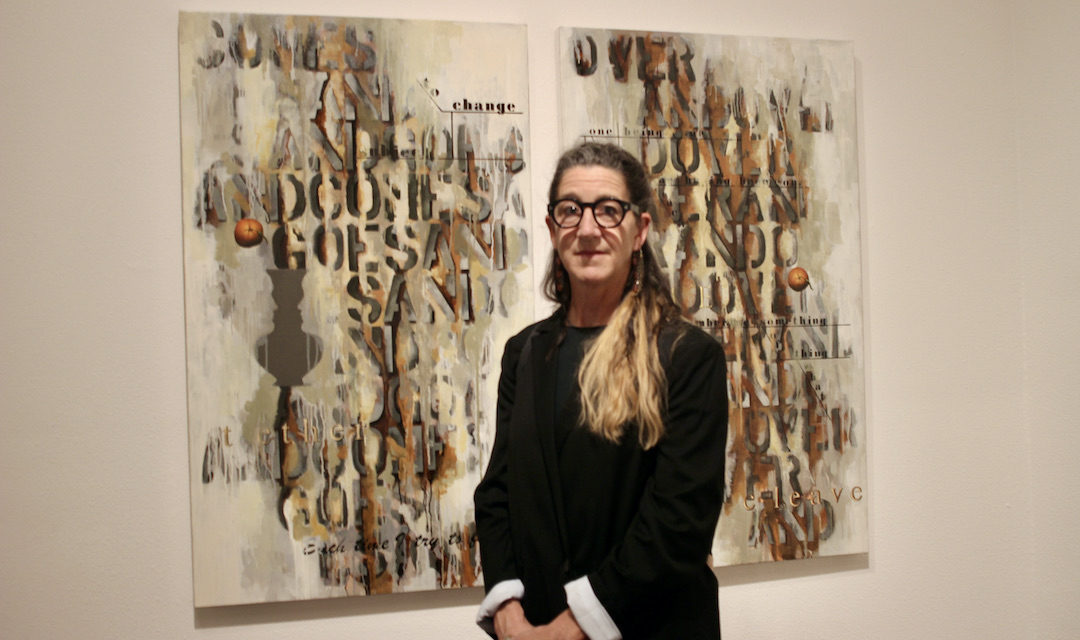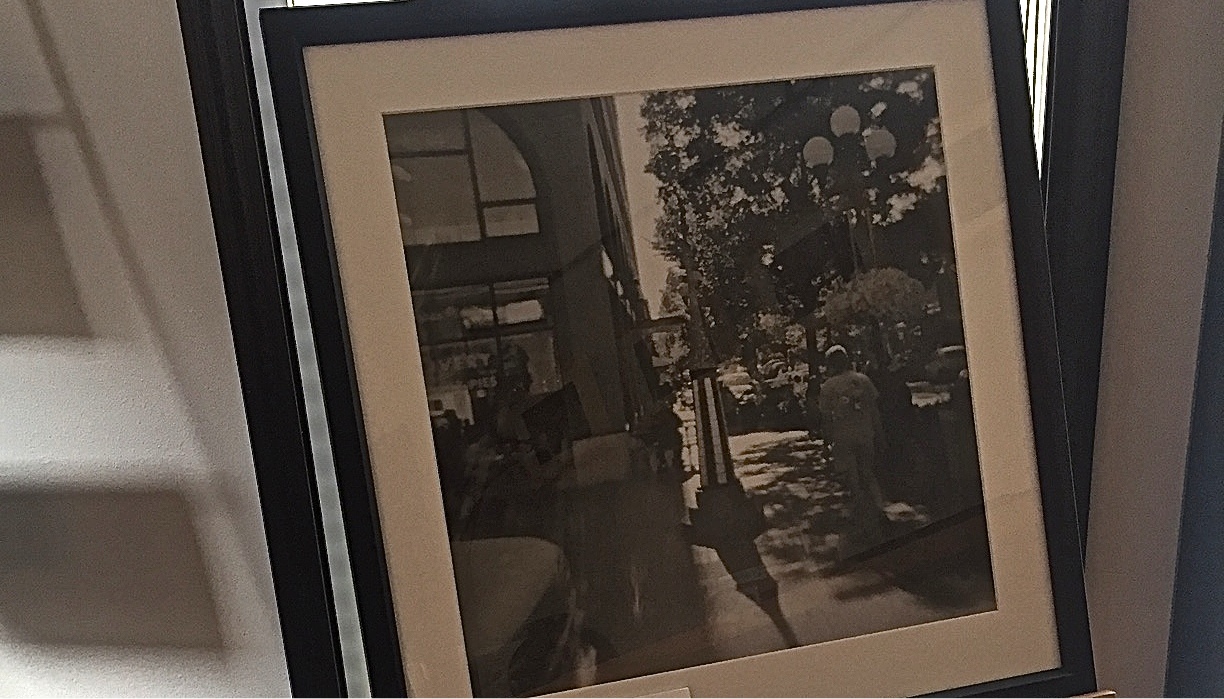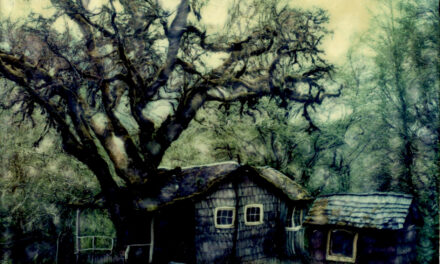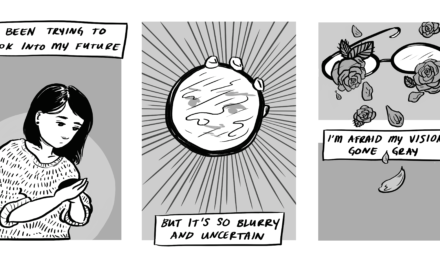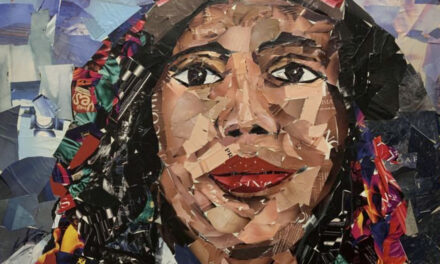(Above:
By Randi Bjornstad
Libby Wadsworth says she likes to play with words, and she’s not kidding. She also likes to make art with words, as she proves in her current exhibit — titled Always InFormation — on display at the Jordan Schnitzer Museum of Art on the University of Oregon campus.
Wadsworth views language not only as sound and meaning but also as visual, historical, and grammatical.
“It’s the idea that words and images can flip back and forth — it’s not either/or but both/and,” Wadsworth said. As a simple example of the kind of word play that delights her, she says “bread and butter,” then deletes the beginning letter of each to get a new phrase with a whole new sound and meaning, as in “read and utter.”
Her interest in language is lifelong, but the idea that words could have a physical relationship came to her suddenly when she discovered diagramming sentences, the once-standard method of graphically showing the relationships that words in a sentence have to each other, starting with subject and verb on one line and then appending adjectives, adverbs and clauses at angles above and below them to clarify position and meaning.
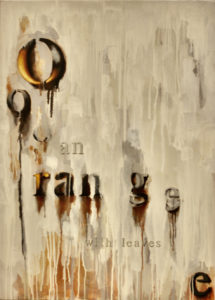
One of the artist Libby Wadsworth’s richly colored combinations of words and images
“To me, that became a way of putting text into visual space,” Wadsworth recalled. Early in her education, she hadn’t been much of a reader of words, focusing on the world more through visual appreciation, but the discovery of the appearance of words has influenced her approach to art ever since.
It took years to solidify the direction she was destined to take. She attended a liberal arts college, where she started out in premed courses but soon gravitated to architecture, where she honed her skills in drawing and expressing spatial relationships.
“I worked for architcts for a number of years,” Wadsworth said, “and then I thought I would try painting. The Art Institute of Chicago had a post-baccalaureate program for people who needed to work on developing art portfolios, and I was accepted there.”
That introduced her to the rich art scene in Chicago, and she also worked in a gallery for year before enrolling in the master’s of fine arts program at the University of Chicago. She was lucky enough to become represented by a gallery right out of graduate school. Several years later, after her husband finished his Ph.D. and was offered a position in English at the University of Oregon. In 1996, they relocated to Eugene.
“I’ve kept on making art and showing my work ever since,” she said. “The main thing I have added is letterpress printing — I took a class at the UO several years ago — and a couple of years ago I bought a tiny letter press and hooked up with that community.”

Many of Wadsworth’s pieces incorporate longer words that can be broken into shorter words with added meaning
The effects of that purchase are evident in her current show, in which most if not all of the art pieces involve her letter press. Amazingly enough, given the changes in printing through the decades that result in nearly all “printing” being done via computer, “there are still a couple of foundries that make metal type for art books and this kind of work,” Wadsworth said.
If she had to use one word to describe her art, it would be “iteration.”
“Iteration is a foundational word, a way to work through a process to come closer and closer to solving a problem — it is a repetition,” she said. “I like to take words apart, not just read through them, to find new relationships and new meanings.”
It’s the way her mind work. Take the words “breach” and “cleave.”
“There are two opposite meanings within each of those words — breach and reach, and cleave and leave,” Wadsworth said. “I like to create works of art that break words apart to illustrate the whole as well as the parts.”
She does that a lot in her Always InFormation exhibit, including — not surprisingly — starting with the title itself.
“It can be as conceptual or as specific as you want it to be,” Wadsworth said. “I’m interested in the fragility of language, the precarious balance between meaning and what that meaning might be to different people.”
Always InFormation
When: Through Nov. 6
Where: Jordan Schnitzer Museum of Art, 1430 Johnson Lane, University of Oregon campus
Hours: 11 a.m. to 5 p.m. Tuesday through Sunday, except open until 8 p.m. on Wednesday
Information: 541-347-3027 or online at jsma.uoregon.edu

